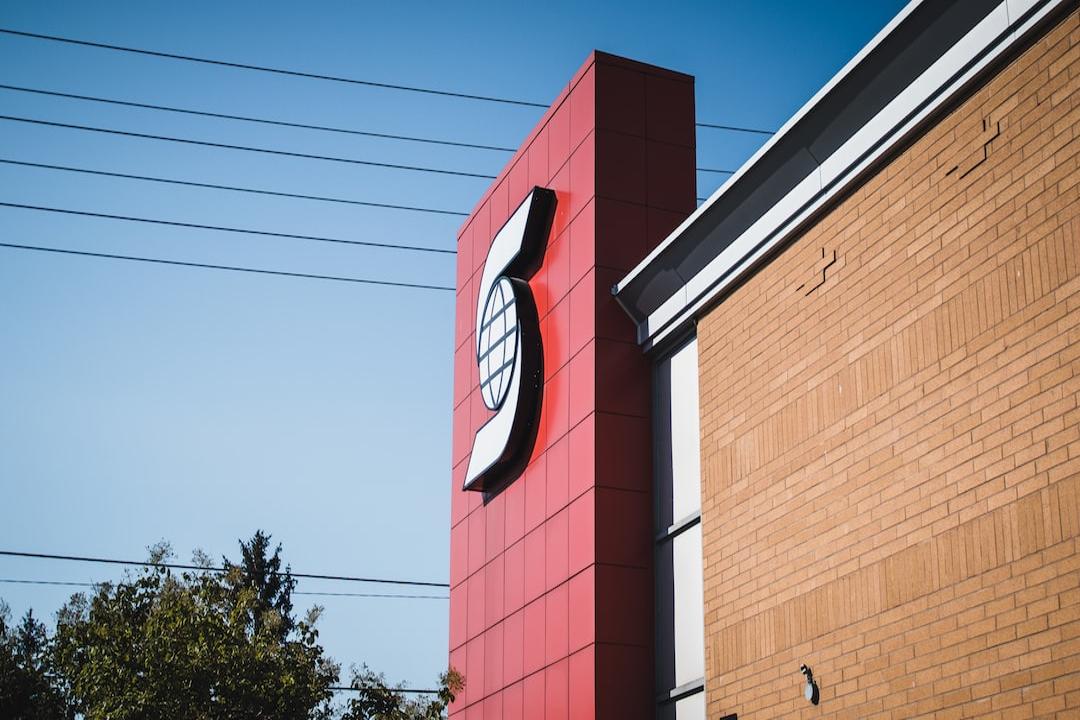Daily Selection of the Most Important Blockchain News and Exclusive Interviews
Join the official “WEB3+” LINE account
The Layer2 track of blockchain has exploded and is recognized as one of the major trends of the year (2023) by important investment institutions in the cryptocurrency industry such as a16z and Paradigm.
Layer 2 solutions like Polygon, Optimism, Arbitrum, and the recent popular ones like Base and Shibarium have emerged one after another.
In addition, the expected upgrade of Ethereum to Cancun at the end of this year, with the most important upgrade proposal “EIP – 4844,” will directly impact the development of Layer2 and make more people optimistic about the development of Layer2-related projects.
What exactly are Layer1 and Layer2? And how does the market view the development of Layer2? Let’s find out.
️Read more:
46% of investors believe that “Ether will surpass Bitcoin”! What are the four reasons behind this? In-depth analysis
Layer1: The Foundation of Blockchain Architecture
Layer1 refers to the foundational layer of blockchain architecture. Blockchain is like a massive distributed ledger (DLT), where computer nodes from all over the world collectively handle the transaction recording work on the blockchain. This ensures the “decentralization” of the blockchain and also maintains the “security” of the chain through distributed ledger technology.
If we use a road as a metaphor, Layer1 is like the most common flat road where all vehicles (transactions) can travel. Layer1 can complete all verification and execution of transactions on the native blockchain without relying on other external systems or blockchain conditions.
The most famous Layer1 blockchains include the blockchain pioneers Bitcoin and Ethereum, as well as later-born blockchains like Solana, the “Meta” public chains Aptos and Sui, and the recently launched Sei blockchain.
️Read more:
Sei blockchain mainnet is online! Why is it 10 times faster than Solana and most suitable for transactions?
Understanding the “Trilemma” of Blockchain Before Exploring Layer2
However, Layer1 blockchains face the famous “Blockchain Trilemma” or “Trilemma of Decentralization.” This problem was proposed by Vitalik Buterin, the founder of Ethereum, in 2017. He pointed out that for most blockchains, it is difficult to simultaneously achieve the three characteristics of “Security,” “Decentralization,” and “Scalability,” and at most, only two can be achieved at the same time.
In blockchain, “security” is ensured by the number of nodes. The more nodes there are, the more difficult it is for hackers to control more than 51% of the nodes to control the entire blockchain, making the blockchain more decentralized.
Some consortium blockchains bind “security” with nodes, where all nodes are known and trusted validators. However, such consortium chains still require a trust mechanism, which contradicts the main feature of “decentralization” that does not require a trust mechanism in blockchain.

Layer1 blockchains face the famous “Blockchain Trilemma” or “Trilemma of Decentralization.”
“Scalability” can also be seen as the “efficiency” of the blockchain network in verifying transactions.
The size of each block in the blockchain network is limited, so transactions need to be arranged in order, and the amount of transactions that can be processed at a time is also limited. In addition, the blockchain relies on consensus algorithms between nodes to maintain the transaction security of the blockchain. However, as the number of nodes increases, it takes longer to achieve consensus among the nodes.
Therefore, to develop “scalability,” it often requires reducing the number of operating nodes, thereby sacrificing “decentralization” and “security.”

Solving the “Efficiency” Problem! The Birth of “On-Chain Scaling” and “Off-Chain Scaling”
In the early stages of blockchain technology development, to ensure “decentralization” and “security,” “scalability” was often the first characteristic to be sacrificed. For ease of understanding, we will use “efficiency” instead of “scalability” in the following discussion.
As the number of blockchain users increases, the “efficiency” of processing transactions gradually becomes a problem.
Taking Ethereum as an example, the Ethereum blockchain can currently only process about 15 transactions per second (15 TPS). Therefore, when users flock to Ethereum, it can easily cause Ethereum to become congested, with a large number of transactions waiting to be processed, resulting in slow processing speeds.

As the number of blockchain users increases, the “efficiency” of processing transactions gradually becomes a problem.
On Ethereum, all transactions require corresponding transaction fees (Gas Fees). The amount of Gas Fees depends on the complexity of the transaction and the speed at which the transaction is completed. If you want to complete a transaction faster, you need to pay additional “tolls” to have it processed earlier, which also leads to high transaction fees during peak periods. This is similar to calling a taxi in heavy rain and being able to pay extra to prioritize your order and match a vehicle faster.
The same problem occurs in Bitcoin as well. For example, earlier this year, the Ordinals protocol for issuing NFTs on Bitcoin caused high transaction fees and slow transaction settlement speeds.
To solve the “efficiency” issue of Layer1, two main solutions have emerged: “On-Chain Scaling” and “Off-Chain Scaling.”
“On-Chain Scaling”:
Also known as “Layer1 Scaling,” it refers to upgrading Layer1 itself to improve its ability to process transactions and data. For example, the Ethereum Foundation’s upgrades to Ethereum are considered Layer1 scaling.
“Off-Chain Scaling”:
Also known as “Layer2 Scaling,” this type of scaling solution primarily aims to alleviate the burden on Layer1 mainnets. Taking Ethereum as an example again, Ethereum’s Layer2 scaling refers to an independent blockchain built on top of Ethereum that relies on the Ethereum network to ensure security. By moving transactions off-chain for processing and then sending back the final results to Ethereum for settlement, transaction speeds can be increased and costs can be reduced.
Since Layer1 scaling usually involves high technical difficulty and requires consensus from the community to make changes to the mainnet, it is more time-consuming and takes longer to upgrade.
On the other hand, Layer2 scaling solutions do not require changes to the blockchain mainnet, so they are relatively flexible in terms of technical upgrades. They are also protected by the security of Layer1, which has led to the current flourishing of Layer2 solution tracks.
Layer2: The Scaling Solution for Blockchain Mainnets
In theory, all Layer1 blockchains can develop their own Layer2 scaling solutions. For example, the Lightning Network is the Layer2 protocol for Bitcoin.
However, currently, besides Bitcoin, Ethereum’s mainnet has more issues with “efficiency” compared to other Layer1 blockchains, and it has a larger user base. Therefore, when mainstream narratives mention Layer2, they mostly refer to Ethereum’s scaling solutions.
The earlier development of Ethereum Layer2 technology can be roughly divided into five stages.
State Channels
Sidechains
Plasma
Rollup
Validium

Ethereum’s mainnet has more issues with “efficiency” compared to other Layer1 blockchains, and it has a larger user base. Therefore, when mainstream narratives mention Layer2, they mostly refer to Ethereum’s scaling solutions.
Among them, the earliest developed technologies are State Channels, Sidechains, and Plasma, which have all fallen by the wayside, and they have been replaced by the emerging technology “Rollup,” which is most highly regarded for Layer2.
“Rollup” refers to compressing and packaging the thousands of transaction data on the blockchain and synchronizing the compressed data back to Ethereum. Therefore, it is sometimes translated as “packing.” Rollup technology has two main features:
Feature 1: Off-chain Execution
Like other Layer2 solutions, Rollup replaces Ethereum to process smart contracts on another blockchain before returning the data to be stored on the Ethereum blockchain.
Because Ethereum needs to do less work and the Rollup technology reduces the amount of data that Ethereum needs to store, it can speed up transaction processing and reduce costs.
Feature 2: Batch Transactions
Rollup will also batch the processed transactions into a “single” data package and return it to Ethereum. Therefore, for Ethereum, it only needs to process the “single” transaction returned from the Rollup blockchain on-chain.
For users, the cost of each transaction is shared among the other transactions that are processed together.
For example, if Rollup can package 100 transactions into one package each time, and the original cost of each transaction through Ethereum is 100 units (Gas fee), using Rollup, the cost of 100 units is shared, and all users only need to pay 1 unit as a transaction fee. By spreading the cost with other transactions, the transaction cost is reduced.
Rollup technology is considered by Ethereum’s founder, Buterin, as the best solution to Ethereum’s scalability problem.
Among the various projects expected to occur in the Ethereum Cancun upgrade at the end of this year, proposal EIP – 4844 (Ethereum Improvement Proposal) is also considered the most important. After the upgrade, it will directly benefit the Layer2 Rollup track.
️Read more:
There are too many Layer2 solutions! Complexity of off-chain ecosystems, founder of Solana: Most likely unsustainable in the long run
How to Verify Transaction Accuracy? Understanding Two Rollup Technologies
Currently, there are two mainstream Rollup technologies in the market, namely “Optimistic Rollups” and “ZK-Rollups,” which differ in the methods used to verify the “accuracy of transactions.”
Technology 1: Optimistic Rollups
As the name suggests, Optimistic Rollups use an “optimistic execution” mechanism, which assumes that all transaction results are correct and only looks for erroneous transactions when errors occur.
By using this approach, the number of transactions that the blockchain needs to verify can be reduced, saving a significant amount of computational costs and time.
The mechanism of Optimistic Rollups is responsible for compressing and packaging transaction data onto Ethereum. Only when someone questions a transaction will data be retrieved from Ethereum to trace back to check for dishonest transactions. This verification method is also known as “fraud proofs.”
Representative projects in this area include Arbitrum, OP Mainnet (formerly Optimism), and Base, the latest popular Layer2 blockchain built using OP technology by Coinbase.
️Read more:
Coinbase Exchange’s “Base” mainnet is officially launched! Aiming to attract hundreds of millions of users, here are 4 key highlights
Technology 2: ZK-Rollups
ZK-Rollups, short for “Zero Knowledge Rollups,” follows the same approach as Optimistic Rollups, where transactions are processed and the results are returned to be stored on Ethereum.
However, ZK-Rollups differ from Optimistic Rollups in the mechanism used. ZK-Rollups use “validity proofs” to verify the accuracy of transactions.

“Rollup” refers to compressing and packaging thousands of transaction data on the blockchain and synchronizing the compressed data back to Ethereum.
In the ZK-Rollups mechanism, all transaction results are assumed to be incorrect, so they need to be verified. After the verification is successful, ZK-Rollups will publish the packaged transaction results on the Ethereum chain.
But what sets ZK-Rollups apart is that because all transactions go through verification before being published, what is published on Ethereum by ZK-Rollups is not the transaction data itself, but rather the proof documents produced by ZK-Rollup using cryptographic algorithms, such as “SNARKs” or “STARKs,” to verify the authenticity of the proof information. These proofs are then published on Ethereum.
Representative projects in this area include zkSync and StarkNet. However, while ZK-Rollups that can verify the authenticity of proof information and maintain user privacy are considered the most complete and secure mechanism, it is technically challenging to implement, and it is still in the development stage with few practical applications.
Daily Selection of the Most Important Blockchain News and Exclusive Interviews
Join the official “WEB3+” LINE account
Proofreading and Editing: Gao Jingyuan

